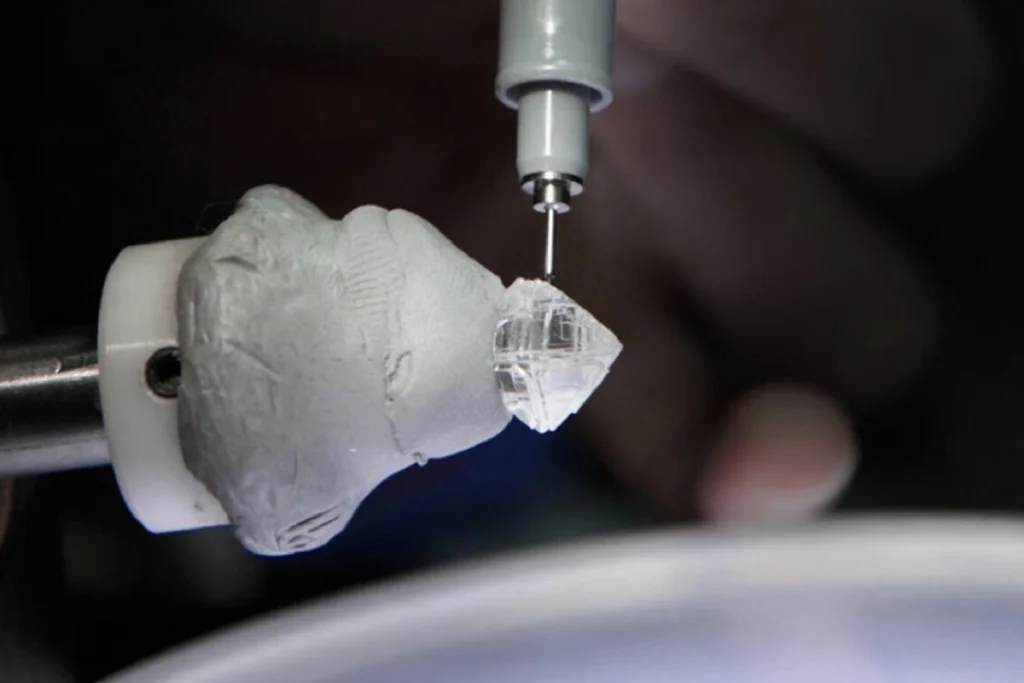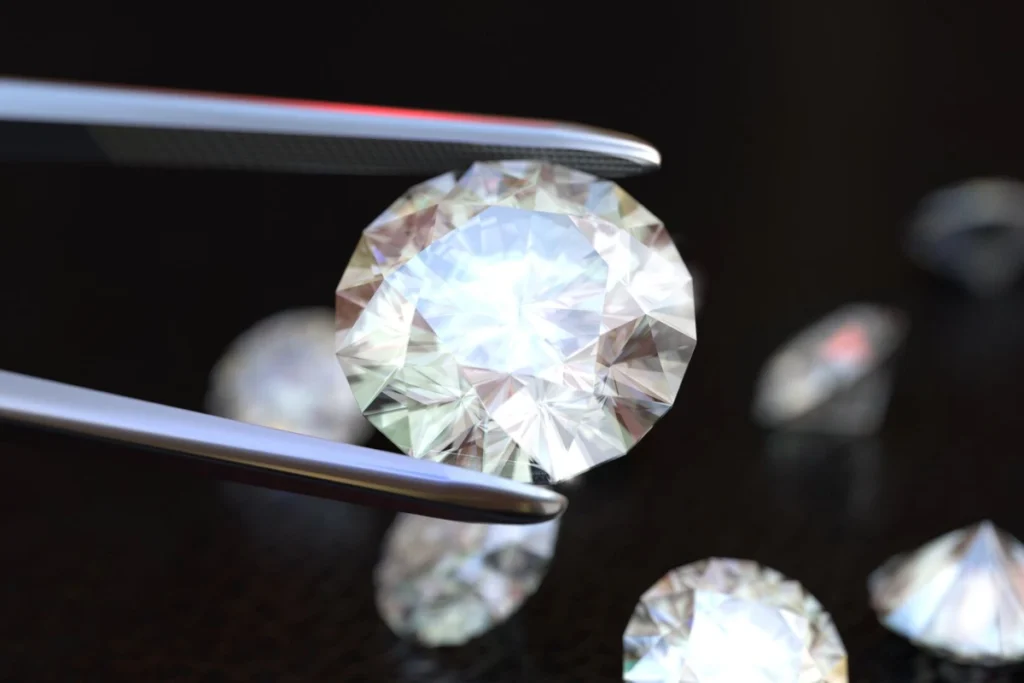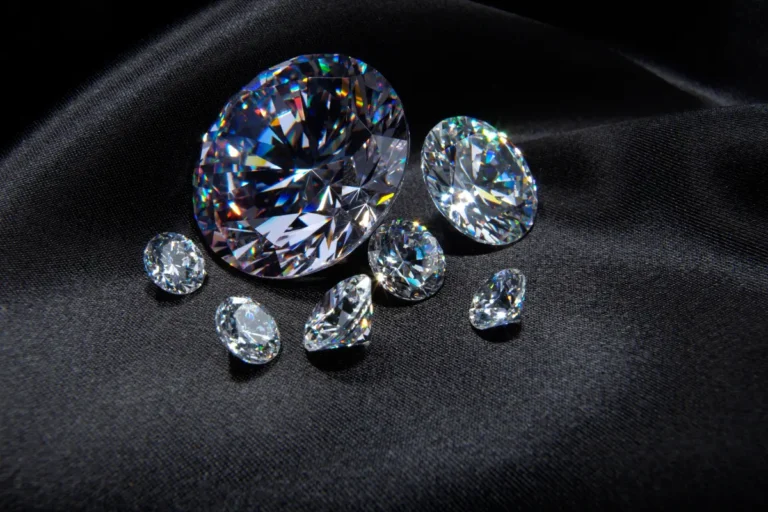Diamonds are required in a proposal, during an anniversary, or for a milestone celebration; however, with the recent developments of lab-grown diamonds, questions about the diamond industry’s future have arisen. In what way do lab-grown diamonds and natural diamonds share similarities and in what way do they differ? Are they actually realistic alternatives at a low price? This publication will attempt to break down the two and clearly state all important distinctions between laboratory-grown and natural diamonds so that you may make the best judgment regarding this product before purchasing.
What Are Lab-Grown Diamonds?
Lab-grown diamonds or man-grown or cultured diamonds are real diamonds, which are cultivated under controlled laboratory conditions. They share the physical and chemical properties with the natural diamonds like hardness, brilliance, and clarity. These diamonds are produced through two main processes, which are High Pressure High Temperature (HPHT) and Chemical Vapor Deposition (CVD). The simulations are two of the conditions found in the depth of the earth where natural diamonds are formed, except that they are conducted in a highly controlled setting.
What Are Natural Diamonds?
Natural diamonds are, however, formed naturally through pressure and temperature over numerous billions of years in the mantle of the earth. Mining is done either through open-pit mining or underground mining. These jewels are unique and each Jewel has its features based on the procedure of its evolution.
Although natural diamonds used to be regarded as a luxurious good, over the past years, the environmental and moral impact of these gems has also begun to rise in popularity, which has also led to the rise of the popularity of lab-grown diamonds.
Major differences in Natural and Lab-Grown Diamonds.
1. Creation Process

Lab-Grown diamonds: These diamonds, as pointed out, are cultivated in a laboratory setting and they imitate the natural setting where diamonds are developed. The HPHT process uses the pressure and heat, whereas the CVD uses a gas with abundant carbon to crystallize the diamond. The procedures take a few weeks to produce a gem in comparison to the billions of years that it takes natural diamonds to form.
Natural Diamonds: These are diamonds that are formed on the ground of the earth in a period of millions to billions of years because of the great amount of heat and pressure. Once it is detected, it is carefully mined, which can be inconclusive at times but very significant for the environment.
2. Cost
The largest selling points of the diamonds include the price of the lab-grown diamonds. Then, they are comparatively lower priced in comparison to natural diamonds since they are prepared in a laboratory and are much less time-consuming to prepare. Diamond jewelry that is produced in laboratories is usually sold at a lower price than the real jewelry, which chemically is identical.
Natural diamonds, though, are even costlier due to the process that is so lengthy and complex in its mining and due to the element of scarcity. Other factors that dictate the cost of the diamond include demand, market conditions, and the nature of the diamond (cut, color, clarity and carat).
3. Sustainability
Diamond mining is an issue that has been a controversial one in the context of the environment. Mining of natural diamonds can result in deforestation, water pollution and disturbance of the ecosystems. In other instances, some regions have also been linked to diamond mining and human rights.
The more long-term solution is the growth of the diamonds in the laboratory because it does not imply mining, and in addition, it requires significantly less energy. Some research suggests that the carbon footprint of a lab-grown diamond is smaller than that of a natural diamond, especially when one produces it using renewable energy.
4. Ethical Considerations
Diamonds produced in laboratories have won favor of numerous people who have discovered the movement of ethical consumerism. Labor exploitation or conflict diamonds cannot be applied to lab-grown diamonds because of the same reasons. By wearing a lab-grown diamond, you will know that it was made by an ethical and transparent company.
Naturally occurring diamonds in the world on the other part, have been linked to unethical activity in certain sections of the world but the industry has gone a long way with campaigns like the Kimberley Process, which are aimed at eliminating the conflict diamonds on the market.
5. Rarity
One of the largest differences between natural and lab diamonds is rarity with sustainable diamonds. The natural diamonds are naturally rare because they are made through a process of billions of years at the very depths of the earth. They are also rare and this contributes to their value and most people have the perception that possessing a natural diamond is prestigious.
On the other hand, the quantity of the diamonds that are produced in the lab can be done in large amounts because they are artificial. However, their quality and ethical sourcing, attractiveness, but not rarity, are what are appealing about them.
How Do I choose the Right Diamond?

This is due to the fact that the decision to go with the production of diamonds in laboratories or those that occur naturally will be in relation to a few factors. Some of the diamond buying tips that could be employed to direct your purchase are as follows:
1. Budget: Lab-grown diamonds will be a fabulous option in case of a lower budget. The price of a natural diamond is many times higher than it is for a diamond of a fraction of the price of a natural diamond. You can even buy a larger diamond or a superior-quality gem at the same price.
2. Ethical Preferences: Lab-grown diamonds are a source of peace of mind to the consumers who are concerned with the moral price of their purchase. They lack the problems that are linked with the process of mining and blood diamonds.
3. Environmental Impact: Lab-grown diamonds are the solution in case you happen to be interested in the concept of sustainability. Lab-grown diamonds have a very limited impact on the environment by minimizing environmental impact.
4. The Emotional Appeal of Rarity: The possession of a natural diamond has a sentimental or emotional significance to others because it is scarce and there is a romantic notion that it is shaped naturally during millions of years. You may tend to purchase a natural diamond in case you attribute significance to the history and tradition of natural diamonds.
5. Look for Quality: Whether you will be visiting the lab-grown diamonds or the natural diamonds, you must focus on quality. Diamonds come in many different qualities, the one that has been grown in the lab and the natural one and you must always make sure that you choose the one that fits your own preference and the budget.
Lab-Grown Diamond Party Jewelry: Take a Stand.
The Lab Grown Diamond Party Jewelry is a nice place to visit when you are in need of a unique jewel to wear at your next event. These jewels cost little and are ethically mined and provide the luster and shine of natural diamonds. Incidentally, making it an accessory in a necklace of sparkling glitter, a pair of gorgeous earrings or a signature ring, diamond party jewelry cultivated in laboratories is the way to shine without a hitch to style or values.
Conclusion
Diamonds are beautiful and shiny and both lab-made and natural diamonds create the same effect where jewels are beauties and shiny and are eternal in nature. The lab-grown diamonds are environmentally friendly, cheap and ethical without corner cutting and the natural diamonds have a true story and an incomparable rarity that most consumers adore.
Find different beautiful and affordable diamond jewelry to fit any occasion when you would be willing to go big with the lab-grown diamonds that you would find at Shop LC and buy lab grown diamond jewellery online depending on such factors as money, ethics, and emotional attachments.
For more information, visit Dress Glamour and explore further.


